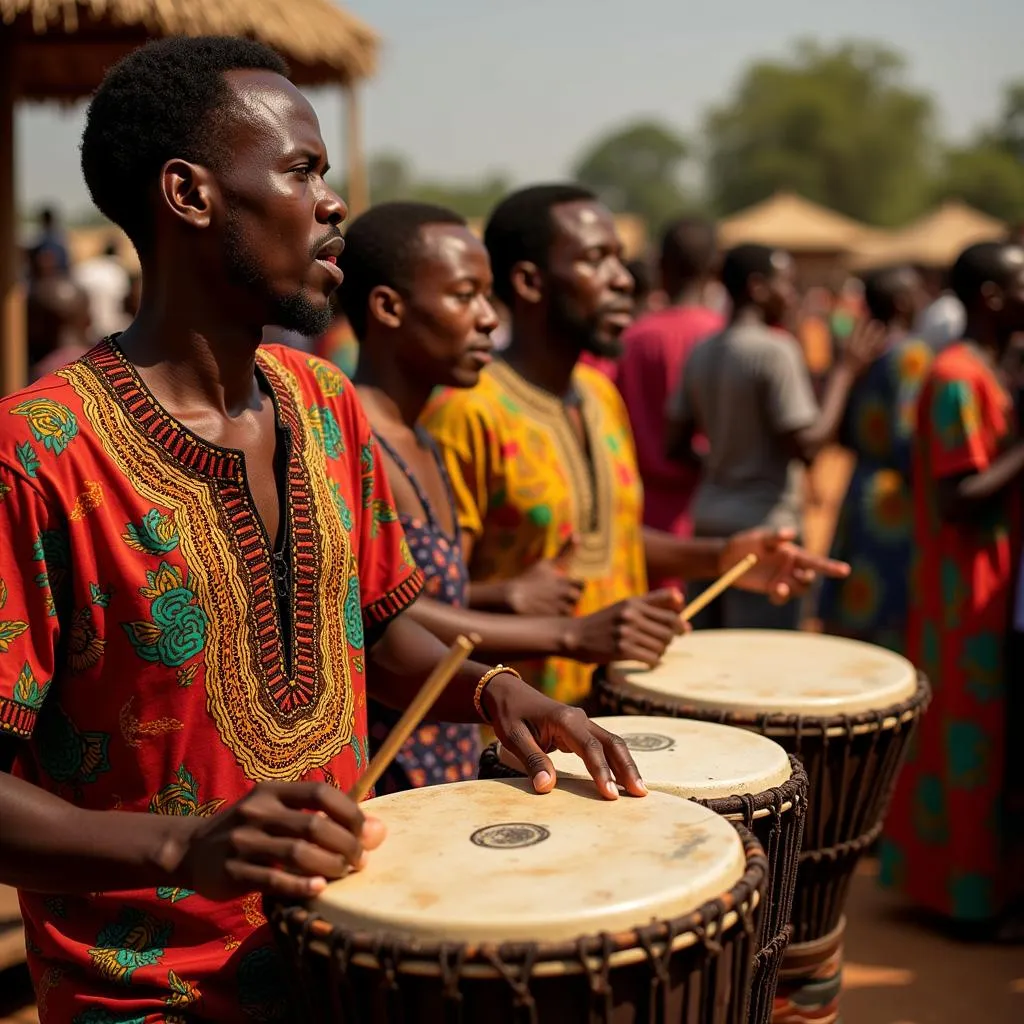African Ear Stretching: A Rich Tapestry of Culture, Tradition, and Beauty
The practice of African Ear Stretching, also known as ear gauging or earlobe elongation, is a fascinating cultural tradition deeply rooted in many African communities. It’s an ancient art form that goes beyond mere aesthetics, serving as a powerful symbol of cultural identity, beauty standards, and social significance.
A Legacy Woven Through Time
Ear stretching in Africa has a rich history, with evidence suggesting its existence for thousands of years. Archaeological discoveries, like those in ancient Egyptian tombs and various African tribal communities, reveal the practice’s long-standing presence. Across the continent, from the Maasai warriors of East Africa to the Mursi tribes of Ethiopia and the Fulani people of West Africa, ear stretching holds deep cultural and traditional significance, making it more than just a body modification.
The Significance Behind the Stretch
While aesthetics play a role, African ear stretching goes beyond mere decoration. It often embodies:
- Cultural Identity: Ear stretching can signify belonging to a specific tribe or ethnic group, acting as a visual marker of cultural heritage.
- Beauty Standards: In many cultures, elongated earlobes are considered a sign of beauty and attractiveness, particularly for women.
- Spiritual Beliefs: Some communities associate ear stretching with spiritual protection, believing it wards off evil spirits or enhances spiritual connection.
- Social Status: The size and design of ear stretchings can sometimes indicate social standing, age, or marital status within certain tribes.
Materials and Methods: A Natural Approach
Traditional African ear stretching methods typically employ natural materials, reflecting a deep connection to the environment. Common materials include:
- Wood: Plugs and tapers crafted from various types of wood are frequently used.
- Stone: Smooth stones, often polished, are a traditional choice for stretching.
- Bone: Animal bones, particularly horns, are carved into unique shapes and sizes.
- Natural Fibers: Plant fibers are wound around the earlobe to encourage gradual stretching.
The stretching process itself is gradual, allowing the earlobes to adapt over time. It usually starts at a young age and continues throughout life, with individuals gradually increasing the size of their stretchings.
Modern Adaptations and Interpretations
Today, African ear stretching is experiencing renewed interest beyond traditional communities. Individuals worldwide are drawn to its beauty and cultural significance. Modern adaptations include:
- Contemporary Materials: While natural materials remain popular, modern materials like titanium, glass, and surgical steel are also used for stretching.
- Artistic Expressions: Contemporary ear stretching often incorporates intricate designs and jewelry, showcasing individual style and artistic flair.
Ear Stretching: A Respectful Appreciation
It’s crucial to approach African ear stretching with respect and understanding. Cultural appropriation, where aspects of a culture are adopted without regard for their original meaning, can be harmful.
- Educate Yourself: Take the time to learn about the cultural context and significance of ear stretching in different African communities.
- Support Ethical Practices: If you’re considering ear stretching, ensure you choose a reputable piercer who prioritizes safety and cultural sensitivity.
- Engage Respectfully: When interacting with individuals who practice ear stretching, approach with curiosity and respect for their traditions.
African ear stretching offers a captivating glimpse into the diverse and vibrant cultures of the continent. It’s a testament to the power of tradition, the artistry of body modification, and the enduring beauty found in cultural diversity.
FAQs about African Ear Stretching
1. Is ear stretching painful?
The process should be gradual and relatively painless when done correctly. However, stretching too quickly can cause discomfort or damage.
2. Can stretched earlobes go back to their original size?
Smaller stretches may shrink back over time, but larger ones might require surgical intervention to restore the earlobe to its original shape.
3. Are there any health risks associated with ear stretching?
As with any body modification, there are potential risks, such as infection or tearing, if not performed hygienically and carefully.
Exploring Further:
For those interested in delving deeper into African culture, check out these articles:
Need More Information?
Have further questions about African ear stretching or other aspects of African culture? We’re here to help!
Contact us:
Phone: +255768904061
Email: kaka.mag@gmail.com
Visit us:
Mbarali DC Mawindi, Kangaga, Tanzania
Our dedicated team is available 24/7 to assist you with any inquiries you may have.

